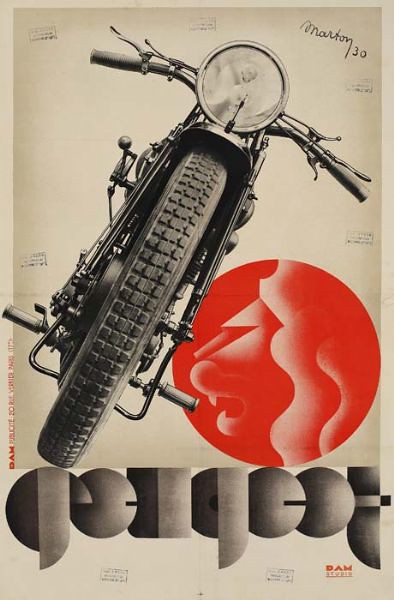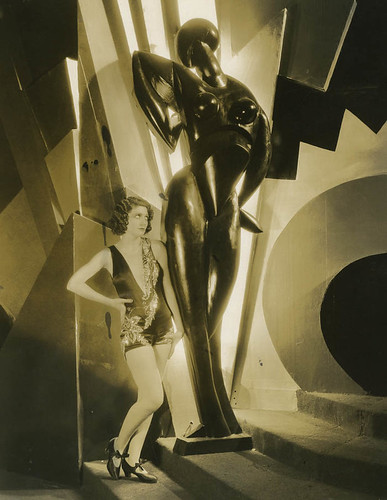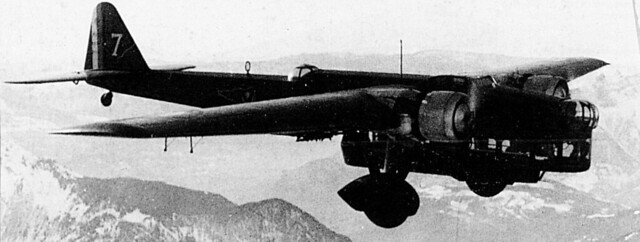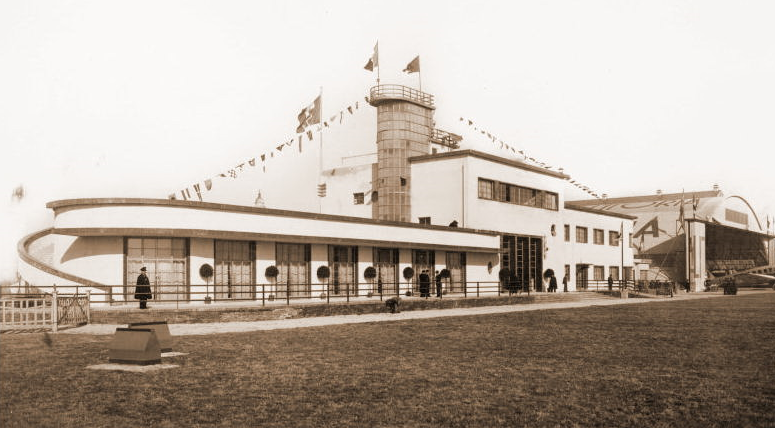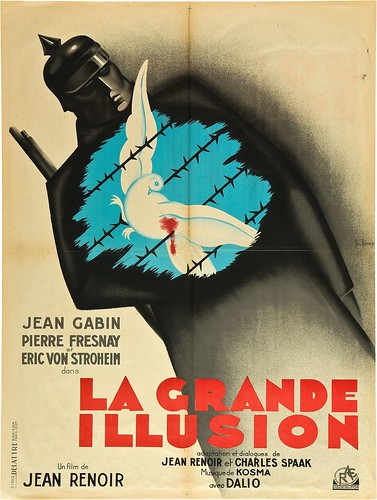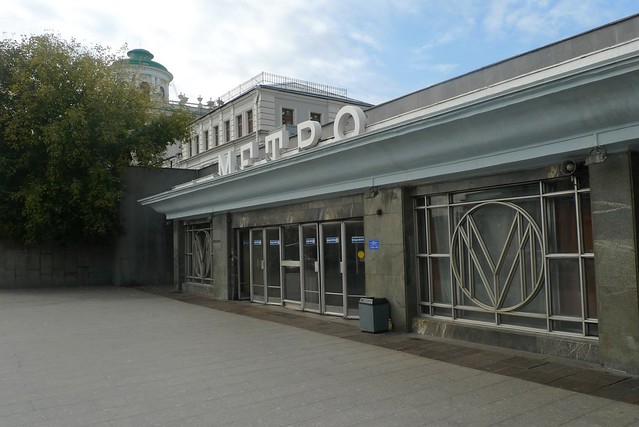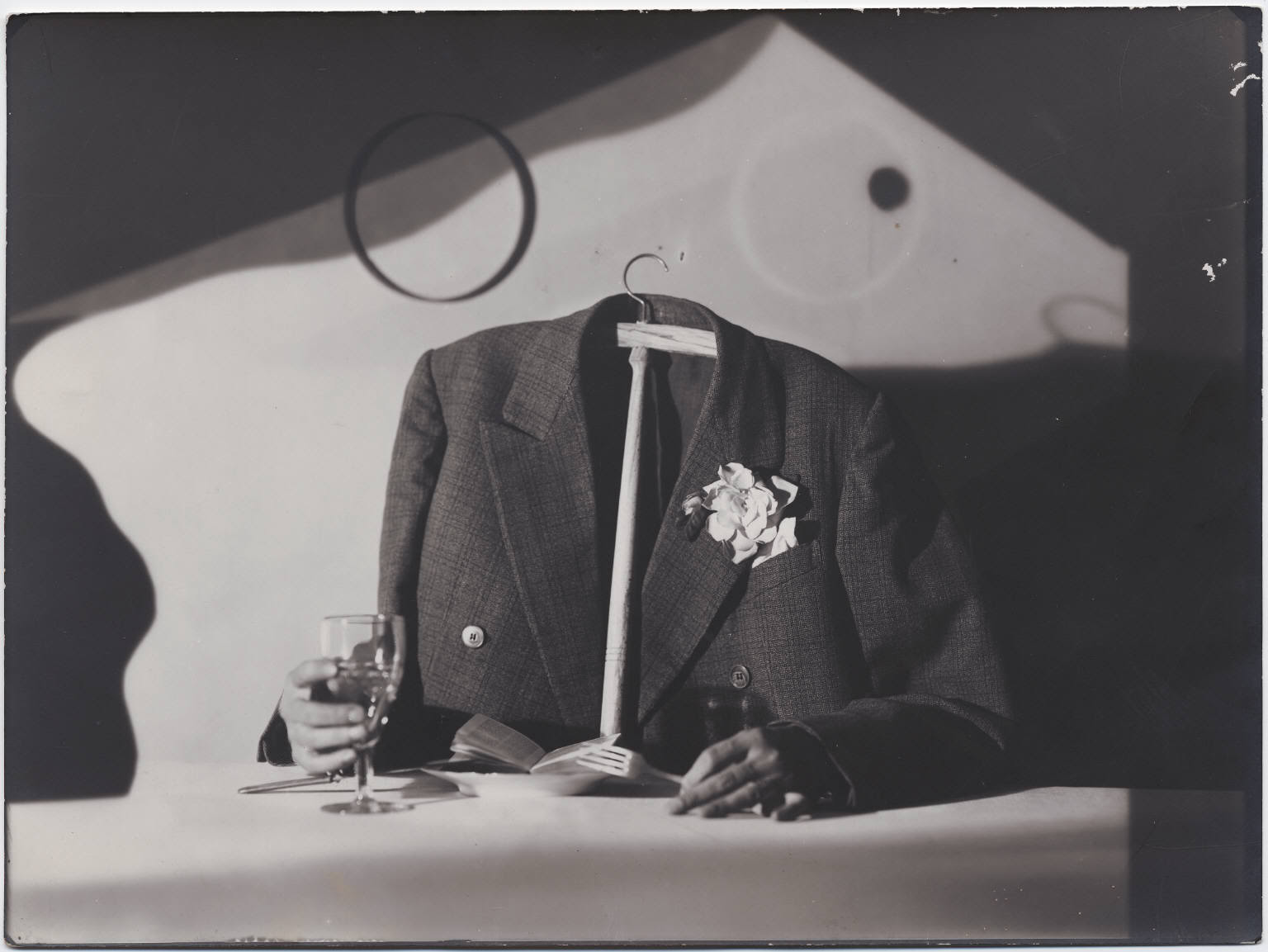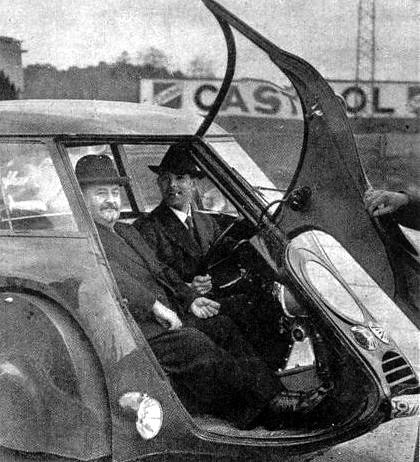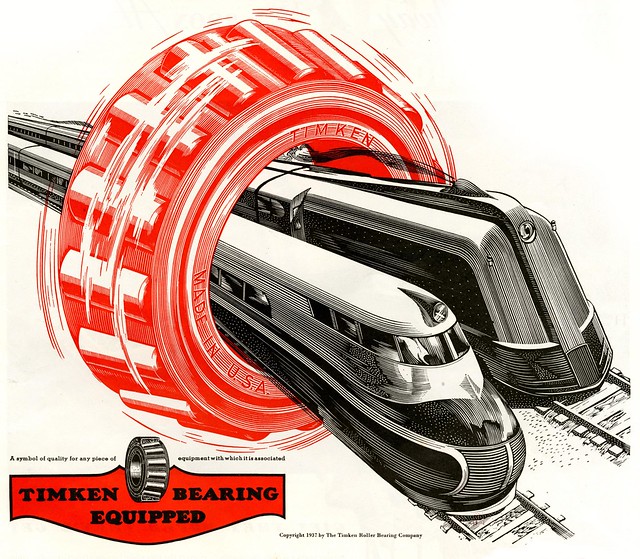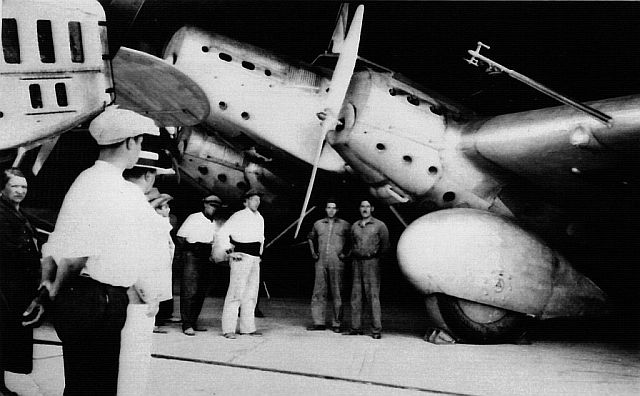Monday, October 31, 2011
Sunday, October 30, 2011
Saturday, October 29, 2011
Friday, October 28, 2011
Underground Airport
Aeroport (Russian: Аэропорт, Airport) is a Moscow Metro station on the Zamoskvoretskaya Line. Its name, literally meaning airport, owes to the nearby Khodynka Aerodrome, Moscow's first airport which has by now ceased operation. Presently there is a bus terminal (Goraerovokzal, Гораэровокзал) which has regular service to Moscow's principal airports. Opened in 1938, the station features a single-vault design. Built using a cut-and cover method, concrete segments of the vault were pre-cast and then lowered into the station.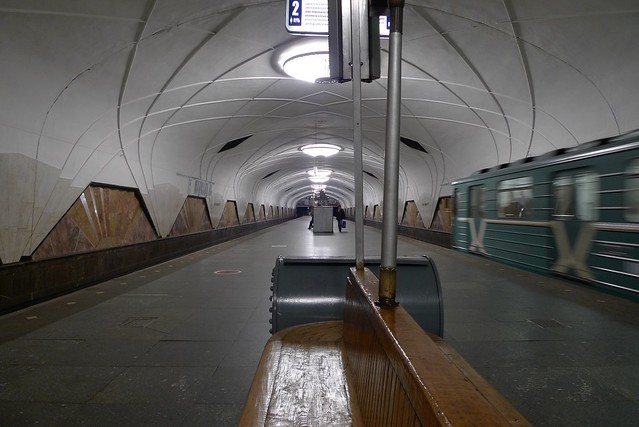 Architects B. Vilensky and V. Yershov applied the aviation theme to this big open station, in what is seen as some of the best examples of Soviet Art deco architecture. The most noticeable design feature is the network of intersecting ribs that fan out across the vaulted ceiling. These ribs originate from fan-shaped limestone panels spaced at regular intervals along the walls, which are red marble with shell-shaped brown marble insets. The floor is reveted with grey granite. Lighting comes from pyramidal objects which house luminescent lamps, although originally the station had chandeliers with normal tungsten bulbs.
Architects B. Vilensky and V. Yershov applied the aviation theme to this big open station, in what is seen as some of the best examples of Soviet Art deco architecture. The most noticeable design feature is the network of intersecting ribs that fan out across the vaulted ceiling. These ribs originate from fan-shaped limestone panels spaced at regular intervals along the walls, which are red marble with shell-shaped brown marble insets. The floor is reveted with grey granite. Lighting comes from pyramidal objects which house luminescent lamps, although originally the station had chandeliers with normal tungsten bulbs.
 Architects B. Vilensky and V. Yershov applied the aviation theme to this big open station, in what is seen as some of the best examples of Soviet Art deco architecture. The most noticeable design feature is the network of intersecting ribs that fan out across the vaulted ceiling. These ribs originate from fan-shaped limestone panels spaced at regular intervals along the walls, which are red marble with shell-shaped brown marble insets. The floor is reveted with grey granite. Lighting comes from pyramidal objects which house luminescent lamps, although originally the station had chandeliers with normal tungsten bulbs.
Architects B. Vilensky and V. Yershov applied the aviation theme to this big open station, in what is seen as some of the best examples of Soviet Art deco architecture. The most noticeable design feature is the network of intersecting ribs that fan out across the vaulted ceiling. These ribs originate from fan-shaped limestone panels spaced at regular intervals along the walls, which are red marble with shell-shaped brown marble insets. The floor is reveted with grey granite. Lighting comes from pyramidal objects which house luminescent lamps, although originally the station had chandeliers with normal tungsten bulbs.(Photographed on Sept. 11, 2011)
Thursday, October 27, 2011
Wednesday, October 26, 2011
Tuesday, October 25, 2011
Littoria Tower, Nerviano
Monday, October 24, 2011
Sunday, October 23, 2011
Saturday, October 22, 2011
Friday, October 21, 2011
The Forty-First
 A poster by the Stenberg Brothers (signed 2 Stenberg 2) for a film directed by Yakov Protazanov based on a story of by Boris Lavrenyov.
A poster by the Stenberg Brothers (signed 2 Stenberg 2) for a film directed by Yakov Protazanov based on a story of by Boris Lavrenyov.1927
Thursday, October 20, 2011
Speakeasy Haven
 Waiters serving food & drink to elegant patrons at the Marlborough House located on the East Side, a speakeasy haven for drinking socialites during prohibition incl. playwright Noel Coward who enjoys their Muscovite duckling.
Waiters serving food & drink to elegant patrons at the Marlborough House located on the East Side, a speakeasy haven for drinking socialites during prohibition incl. playwright Noel Coward who enjoys their Muscovite duckling.New York 1933
Photographer: Margaret Bourke-White
Source: LIFE
Wednesday, October 19, 2011
ReL LuftMaster
 Dubbed "Cock-duck" or "Plywood Gherkin", this ultralight aerocoupe is a fruit of co-operation between ReL Works (platform, body) and AHGG (4-cylinder engine)
Dubbed "Cock-duck" or "Plywood Gherkin", this ultralight aerocoupe is a fruit of co-operation between ReL Works (platform, body) and AHGG (4-cylinder engine)Artwork by lnago @ atlantic_rep LJ community
Tuesday, October 18, 2011
Monday, October 17, 2011
Sunday, October 16, 2011
Europa and Bremen
 SS Europa (above) was built in 1929 with her sister ship SS Bremen (below) to be the second 50,000 gross tons North German Lloyd liner.
SS Europa (above) was built in 1929 with her sister ship SS Bremen (below) to be the second 50,000 gross tons North German Lloyd liner. Europa and her slightly larger sister were designed to have a cruising speed of 27.5 knots, allowing an Atlantic crossing time of 5 days. This enabled Norddeutsche Lloyd to run regular weekly crossings with two ships, a feat that normally required three.
Europa and her slightly larger sister were designed to have a cruising speed of 27.5 knots, allowing an Atlantic crossing time of 5 days. This enabled Norddeutsche Lloyd to run regular weekly crossings with two ships, a feat that normally required three.Source: Cruising the Past
Saturday, October 15, 2011
Day Trippers
 "Day Trips & Hikes" - leaflet issued by the London & North Eastern Railway, 1938 - illustrated by Frank Newbould
"Day Trips & Hikes" - leaflet issued by the London & North Eastern Railway, 1938 - illustrated by Frank NewbouldFrom mickeyashworth's photostream @ Flickr
Thursday, October 13, 2011
M for Metro
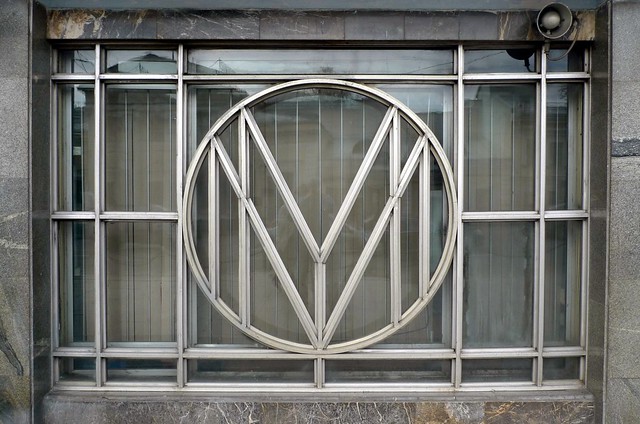 Biblioteka Imeni Lenina (Russian: Библиоте́ка и́мени Ле́нина, English: Lenin Library) is a station on the Sokolnicheskaya Line of the Moscow Metro. The station was opened on May 15, 1935 as a part of the first stage of the Metro. It is situated in the very centre of the city under the Mokhovaya Street, and is named for the nearby Russian State Library (called the Lenin Library in 1925–1992). Its architects were A. I. Gontskevich and S. Sulin.
Biblioteka Imeni Lenina (Russian: Библиоте́ка и́мени Ле́нина, English: Lenin Library) is a station on the Sokolnicheskaya Line of the Moscow Metro. The station was opened on May 15, 1935 as a part of the first stage of the Metro. It is situated in the very centre of the city under the Mokhovaya Street, and is named for the nearby Russian State Library (called the Lenin Library in 1925–1992). Its architects were A. I. Gontskevich and S. Sulin.Wednesday, October 12, 2011
Tuesday, October 11, 2011
Monday, October 10, 2011
Sunday, October 9, 2011
Saturday, October 8, 2011
Friday, October 7, 2011
Victoria Coach Station
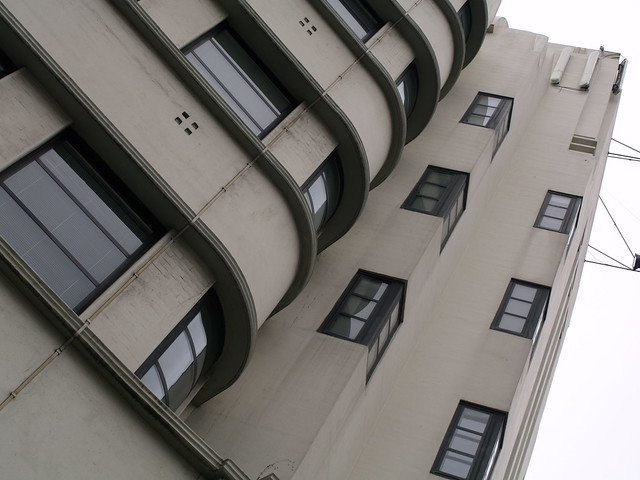 Victoria Coach Station was opened at its present site in Buckingham Palace Road, London, in 1932, by London Coastal Coaches Limited, an association of coach operators. The building is in a distinctive Art Deco style, the architects for which were Wallis, Gilbert and Partners.
Victoria Coach Station was opened at its present site in Buckingham Palace Road, London, in 1932, by London Coastal Coaches Limited, an association of coach operators. The building is in a distinctive Art Deco style, the architects for which were Wallis, Gilbert and Partners.Photo by FrMark @ Flickr
Thursday, October 6, 2011
Airship Memorial
 SSSR-V6 OSOAVIAKhIM (Russian: СССР-В6 ОСОАВИАХИМ) was a semi-rigid airship constructed as part of the Soviet airship program, and designed by the Italian engineer and airship designer Umberto Nobile. V6 was one of the largest airships built in the Soviet Union and one of the most successful. In October 1937 it set a new world record for airship endurance of 130 hours 27 minutes under command of Ivan Pankow, beating the previous record by the German airship Graf Zeppelin.
SSSR-V6 OSOAVIAKhIM (Russian: СССР-В6 ОСОАВИАХИМ) was a semi-rigid airship constructed as part of the Soviet airship program, and designed by the Italian engineer and airship designer Umberto Nobile. V6 was one of the largest airships built in the Soviet Union and one of the most successful. In October 1937 it set a new world record for airship endurance of 130 hours 27 minutes under command of Ivan Pankow, beating the previous record by the German airship Graf Zeppelin.In February 1938, a Soviet Arctic expedition led by Ivan Papanin became stranded on the drifting ice pack. It was decided to send the V6 on a rescue mission, starting from the city of Murmansk. The flight between the airship's base at Moscow, and Murmansk would serve as a test of the behavior of the airship in an Arctic climate.
During the flight, at 16:45 on 5 February 1938, the airship collided with the high ground near Kandalaksha, 280 km south of Murmansk. Of the 19 people on board, 13 perished. The official version of the accident determined that the "pre-revolutionary" chart being used had the wrong altitude marked on it. An unofficial version suggests instead that the crash was jointly due to the old charts, poor visibility, and human error. Supposedly, the commander Nikolai Gudovantsev ordered the airship to gain altitude and rise to 800 metres, but it was too late, and the ship struck the mountain around the 300-metre mark.
The crew of V6 are buried in the Novodevichye Cemetery in Moscow.
Photographed on September 11, 2011
Wednesday, October 5, 2011
Tuesday, October 4, 2011
Monday, October 3, 2011
Project Sunray
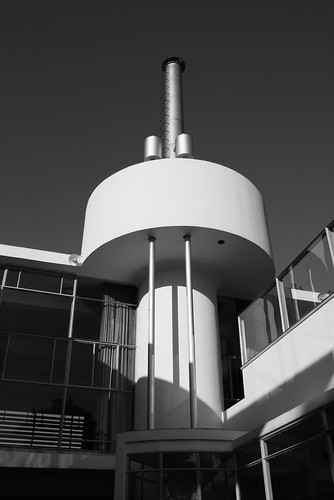 The estate Zonnestraal (Sunray) is a former sanatorium in Hilversum, Netherlands. The building was designed by architect Jan Duiker in cooperation with Bernard Bijvoet and Jan Gerko Wiebenga.
The estate Zonnestraal (Sunray) is a former sanatorium in Hilversum, Netherlands. The building was designed by architect Jan Duiker in cooperation with Bernard Bijvoet and Jan Gerko Wiebenga.Main building and the Henri ter Meulen pavilion were built in 1928; the Dresselhuys pavilion was built in 1931. The main building contained the central facilities, and the patients resided in the pavilions.
The sanatorium was in operation until 1957, and operated as a hospital until 1993. Currently the main building contains several health care related companies. In 1995, the estate was submitted to UNESCO's list of World Heritage Sites, and it is currently on the tentative list.
Sunday, October 2, 2011
Saturday, October 1, 2011
Subscribe to:
Posts (Atom)
